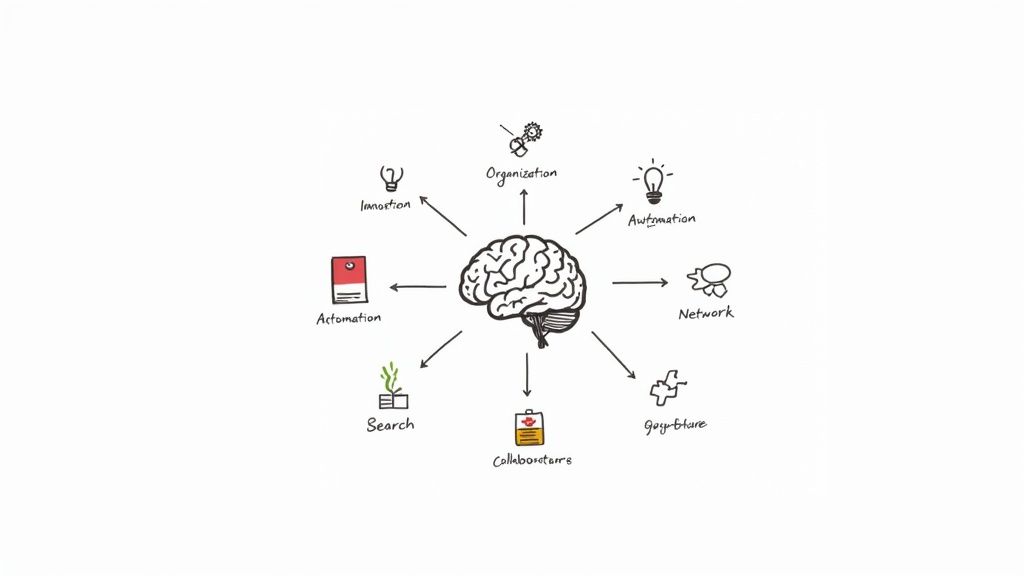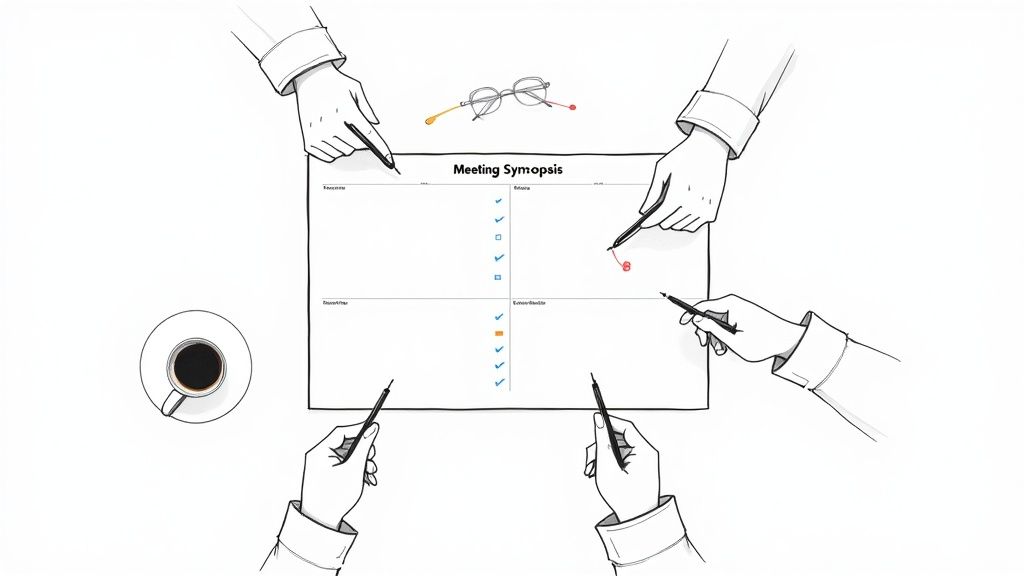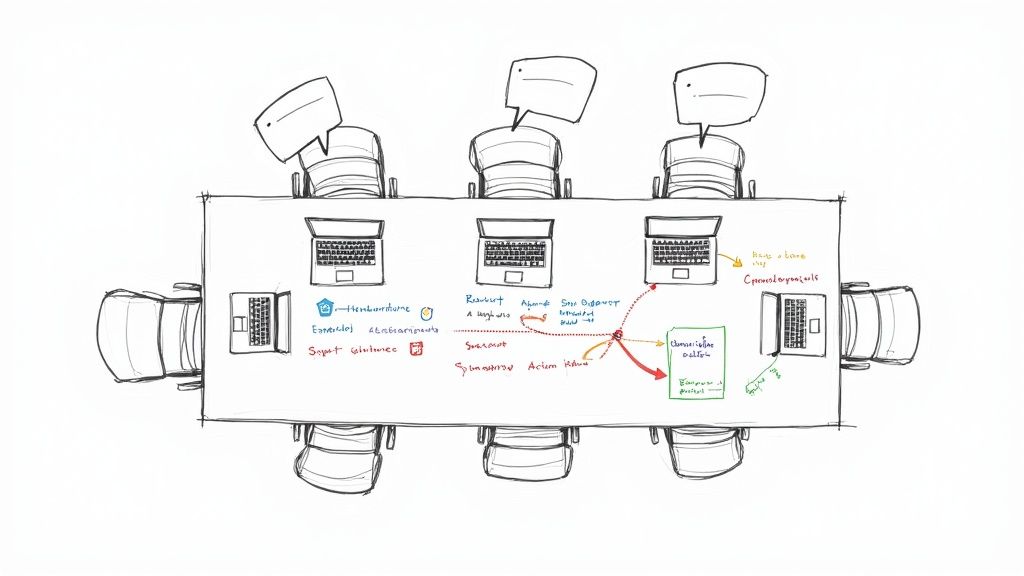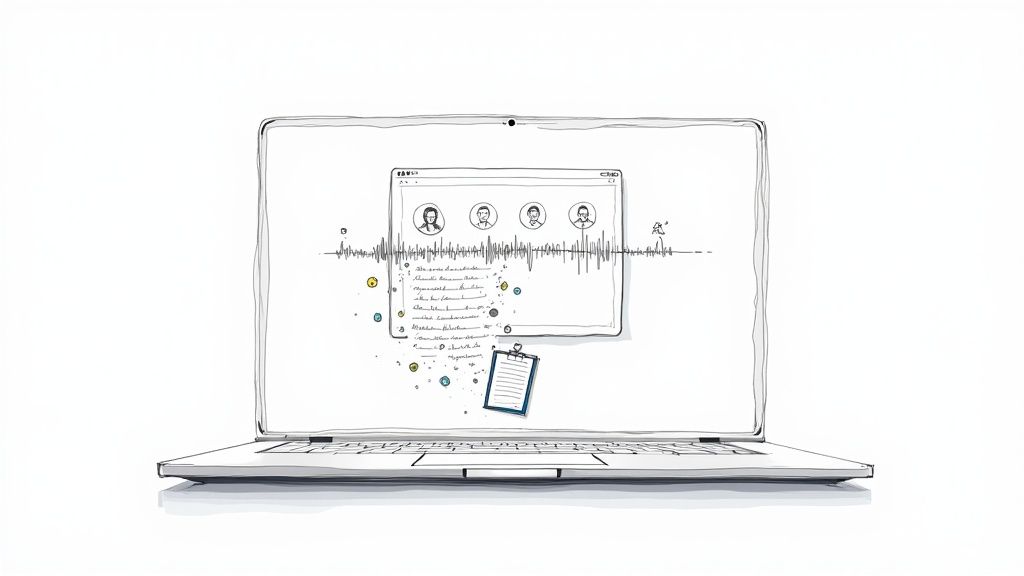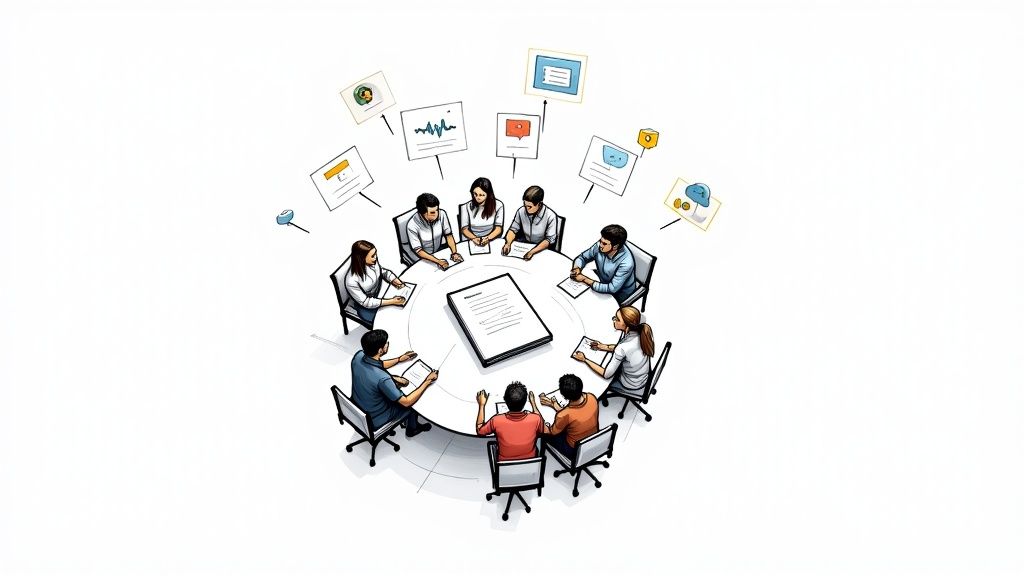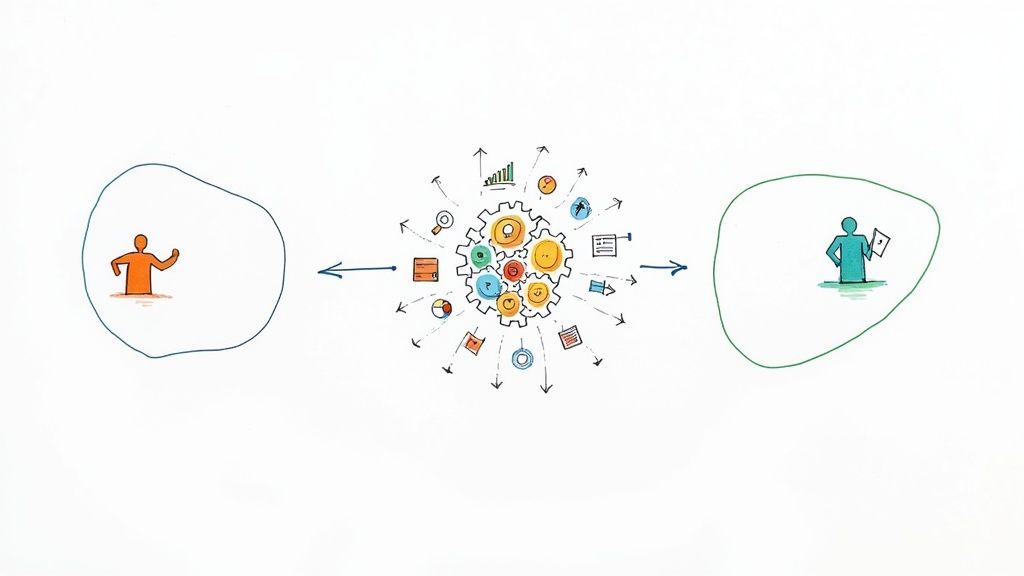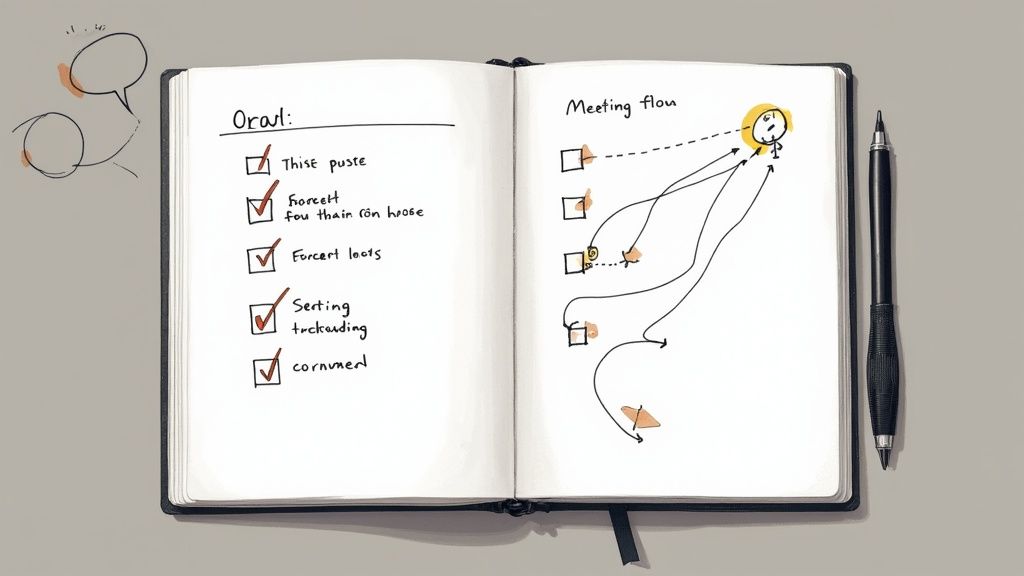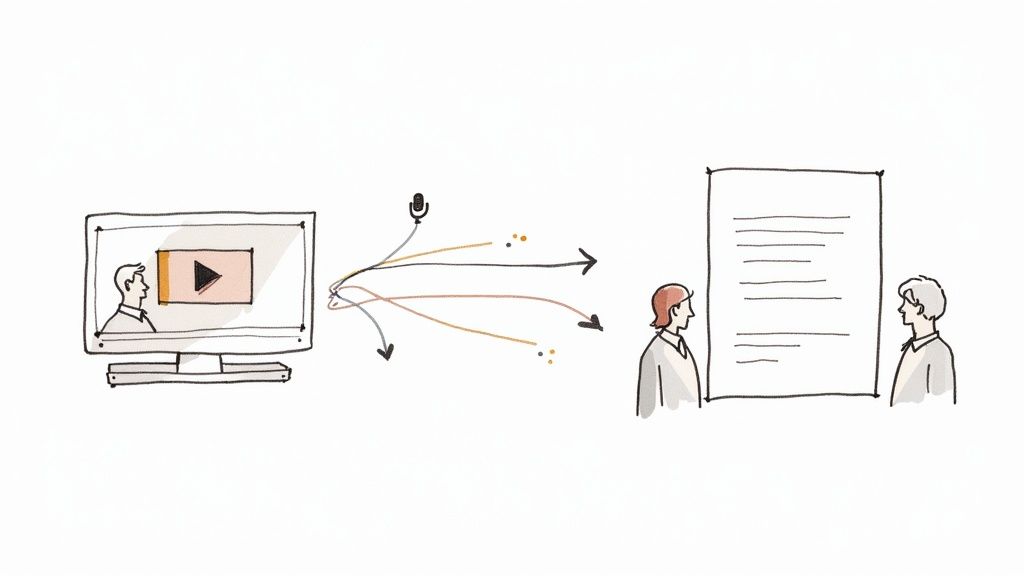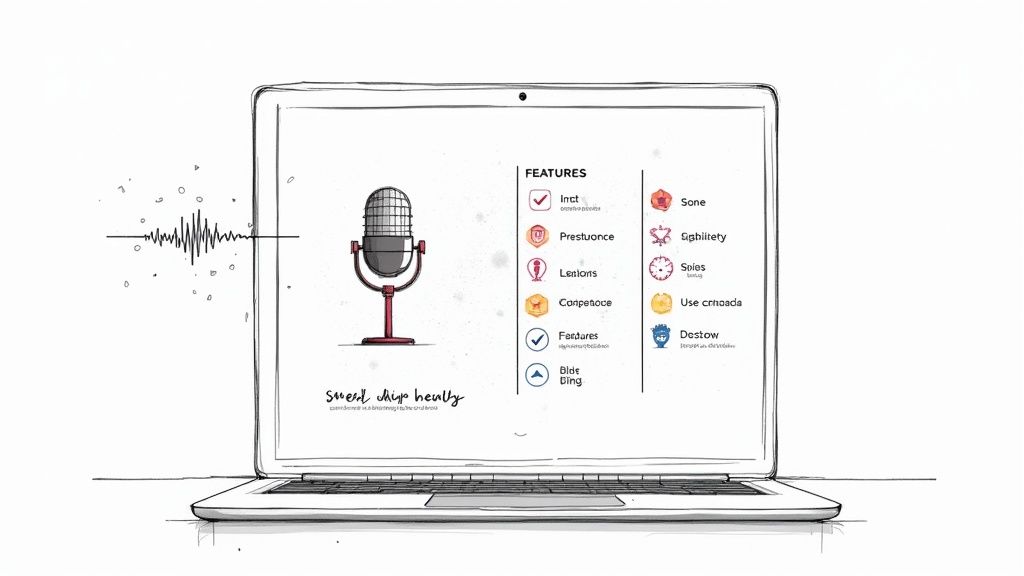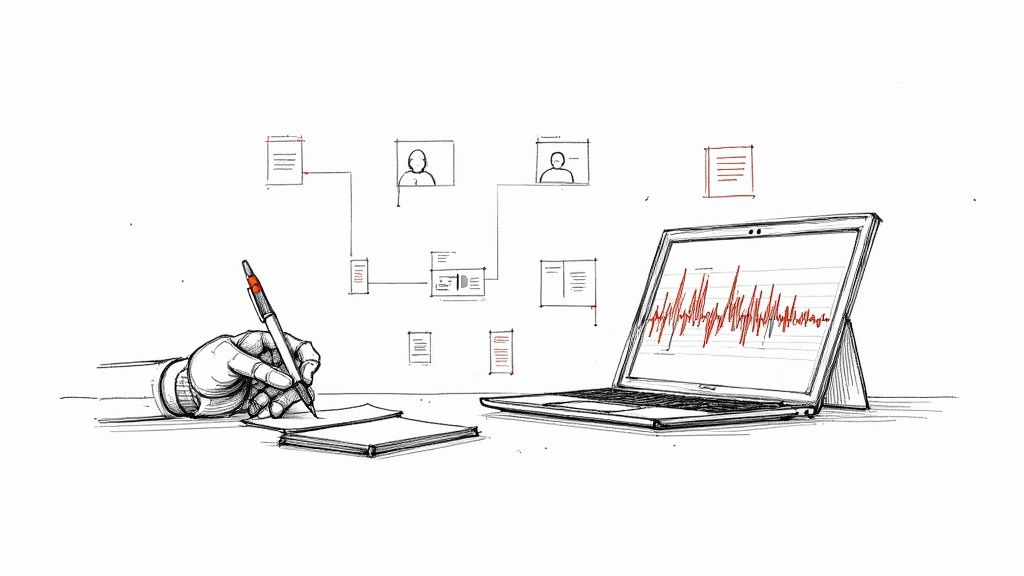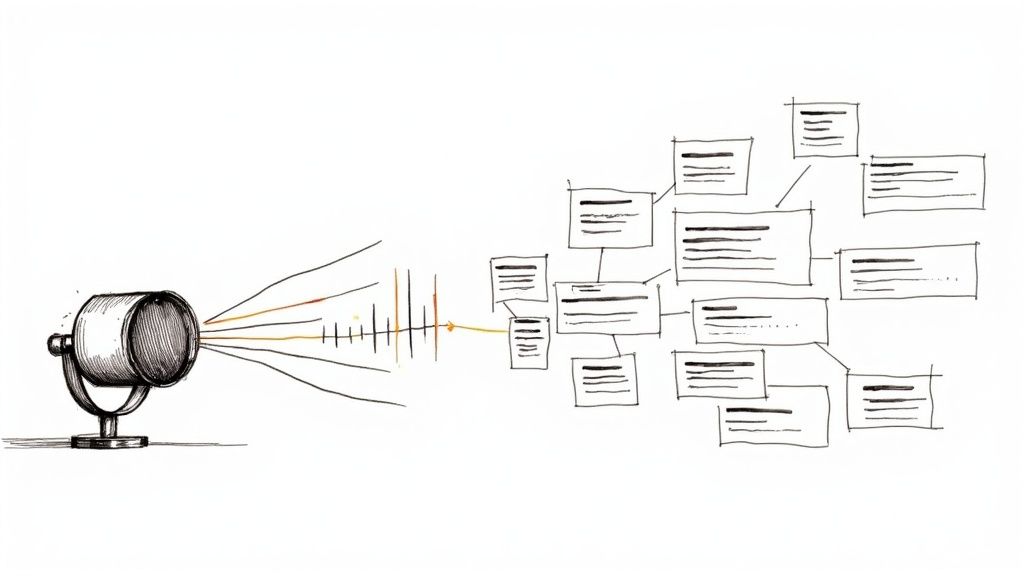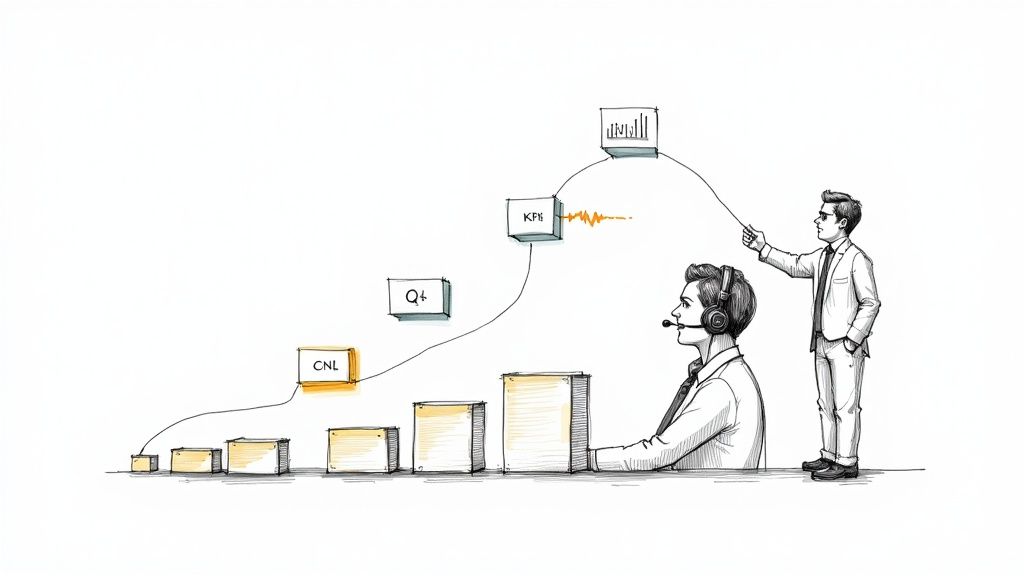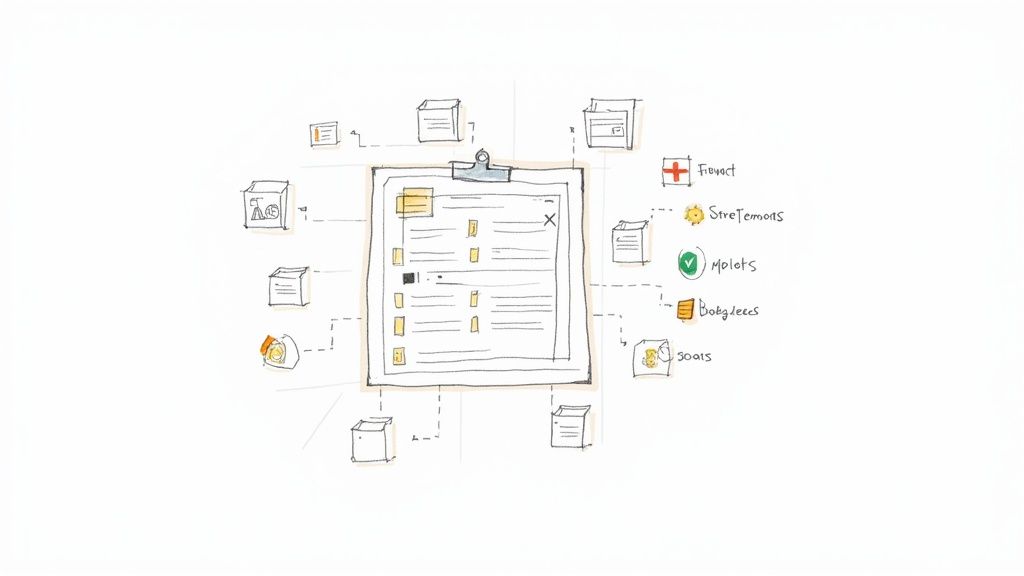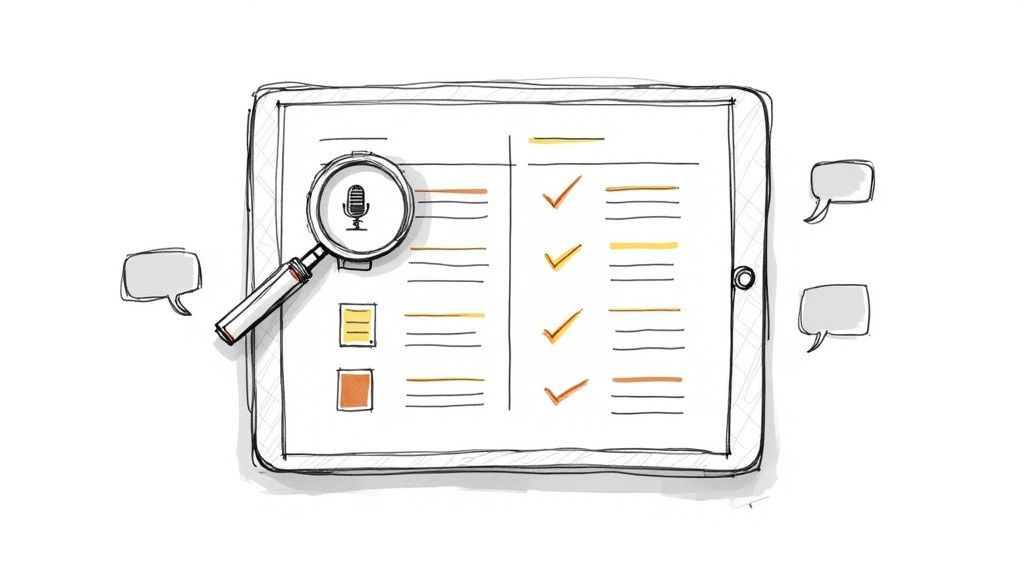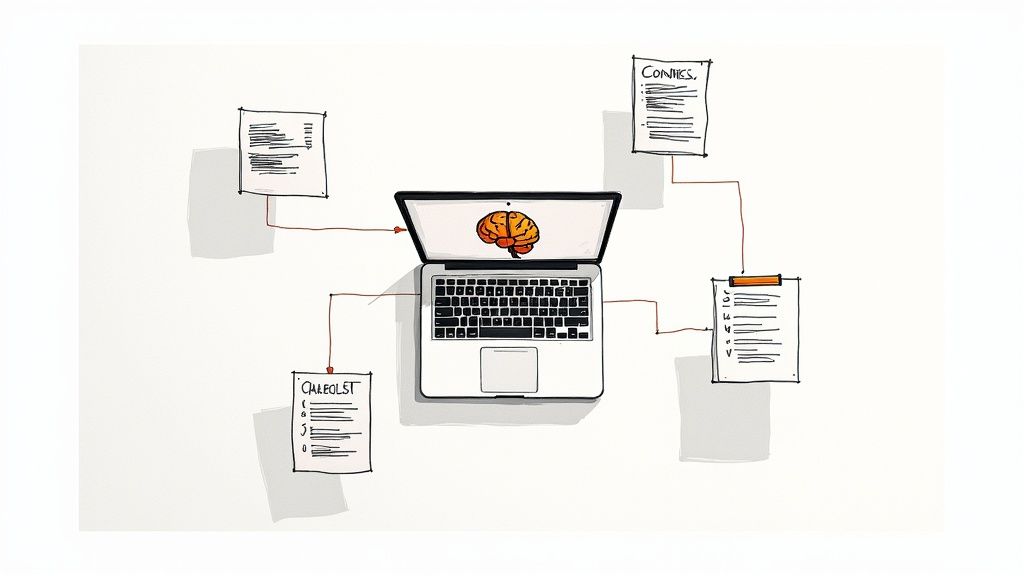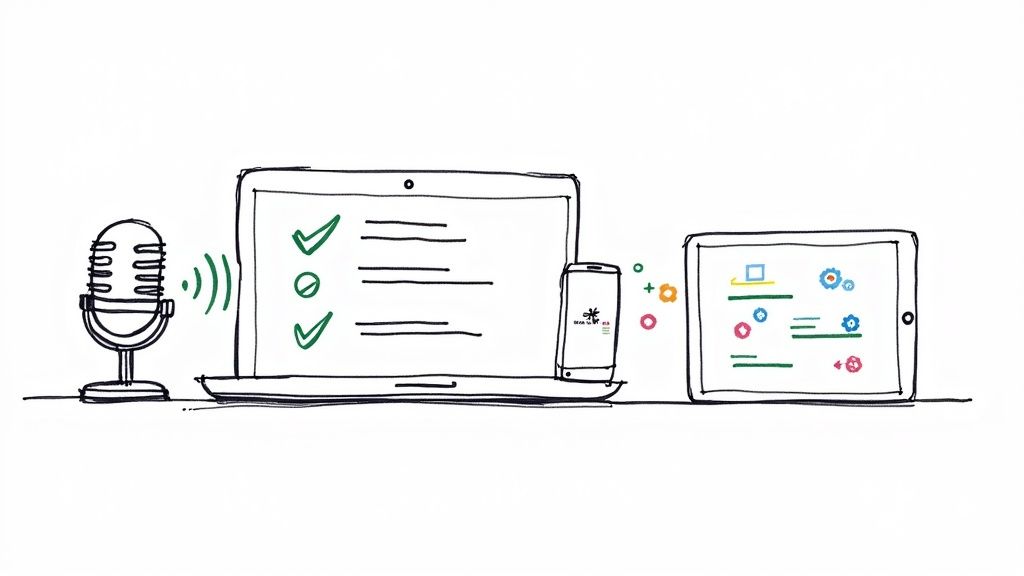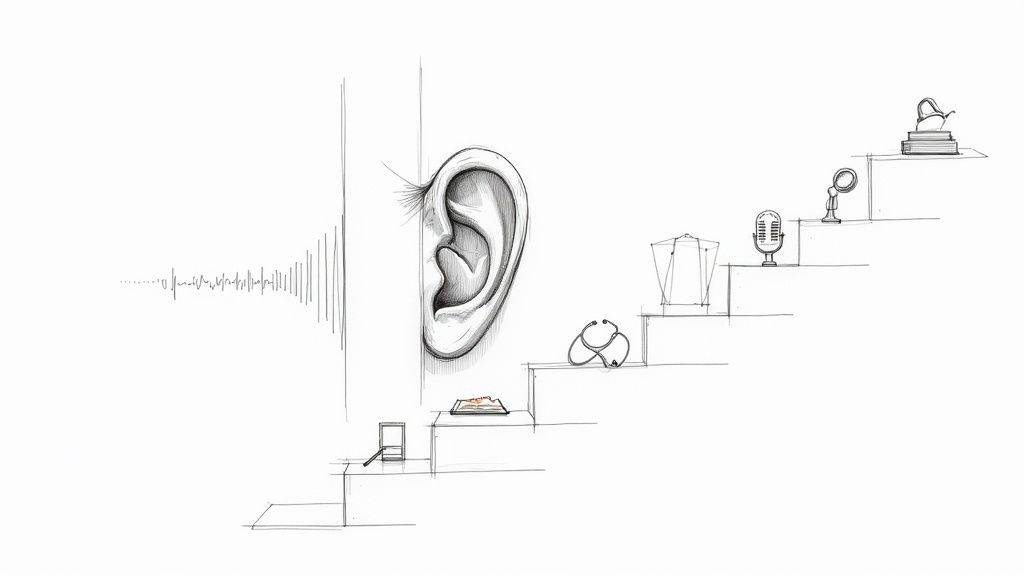7 Actionable Ways to Improve Workplace Communication Today
In the modern workplace, with distributed teams and a constant flood of information, clear communication isn't just a soft skill—it's the operating system for a successful business. When communication falters, the consequences are tangible: misunderstandings lead to missed deadlines, projects go off the rails, and employee engagement plummets. But effective communication isn't just about preventing problems; it's about unlocking your team's full potential. It’s the catalyst for innovation, the foundation of trust, and the key to creating an environment where great ideas can flourish.
This guide moves beyond generic advice like "be a better listener." Instead, we'll dive into practical, experience-backed ways to improve workplace communication that tackle the real challenges of today's teams. You won't find vague theories here. This is a comprehensive roadmap of actionable methods—from mastering active listening to establishing clear written standards—that you can start using immediately to build a more connected, efficient, and resilient organization.
1. Master the Art of Active Listening
Active listening is more than just hearing words; it's a conscious effort to understand the complete message, including the emotions and intentions behind it. It requires being fully present in the conversation, paying attention to both what is said and what isn't.
From my experience, this is the single most impactful skill for building psychological safety. When team members feel genuinely heard, they're more willing to share ideas, voice concerns, and collaborate openly. This practice, highlighted in Google's Project Aristotle study as the key to high-performing teams, turns simple conversations into opportunities for connection and innovation, reducing misunderstandings before they even start.

Why It Works and When to Use It
Active listening is crucial in almost every interaction, from one-on-one feedback sessions to team brainstorming. It's especially powerful during conflict resolution or performance reviews. By focusing intently on the speaker, you demonstrate respect and build the trust essential for strong professional relationships. I've seen it transform tense negotiations into productive collaborations, simply because both parties felt truly understood.
How to Implement Active Listening
To make this a habit, start with these deliberate actions:
- Eliminate Distractions: Put your phone away, close unnecessary tabs, and give the speaker your undivided attention.
- Use Engaged Body Language: Maintain eye contact, nod to show you're following, and lean in slightly to signal interest.
- Paraphrase to Confirm Understanding: After the speaker finishes, summarize their key points. Try saying, "So, if I'm understanding correctly, the main obstacle is the budget, not the timeline?"
- Ask Open-Ended Questions: Encourage deeper conversation with questions that can't be answered with a "yes" or "no," such as "Can you tell me more about your concerns with that approach?"
Combining these listening skills with strong organizational habits is also key; you can explore new ways to capture important details with these powerful note-taking strategies.
2. Create Transparent and Open Communication Channels
Creating transparent and open communication channels is another powerful way to improve workplace communication. This means establishing clear, accessible avenues where information flows freely across all levels of the organization, not just from the top down.
It’s about more than just having a company chat tool; it’s a cultural commitment to openness. When information is shared proactively, it demystifies decision-making and empowers employees with the context they need to excel. This builds deep organizational trust, reduces the "us vs. them" mentality, and ensures critical information reaches everyone who needs it.
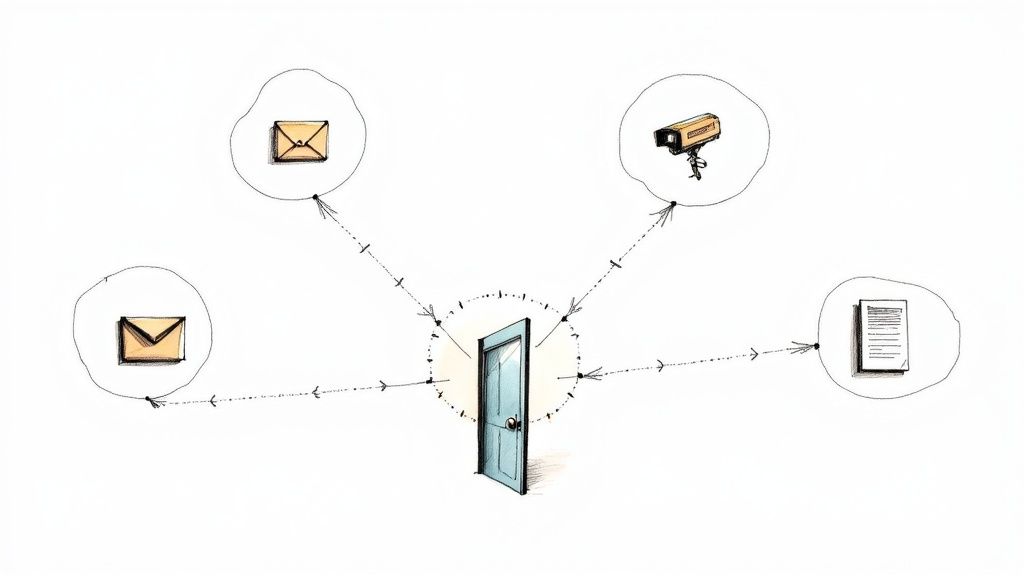
Why It Works and When to Use It
Transparent communication is essential for building a resilient organization, especially in remote or hybrid settings where "water cooler" conversations don't happen naturally. It's particularly effective during times of change, when launching new projects, or when aiming to boost morale. By making information readily available, you eliminate ambiguity and curb rumors. This is why companies like GitLab practice "radical transparency," making nearly all documents and discussions public to keep everyone informed and engaged.
How to Implement Transparent Communication Channels
Integrating this principle requires both the right tools and a supportive culture. Start with these actionable steps:
- Choose Integrated Platforms: Select tools like Slack or Microsoft Teams that fit into your existing workflows, making it easy to access and share information.
- Establish Clear Guidelines: Create a channel-usage guide that outlines the purpose of each channel (e.g.,
#announcementsfor official news,#project-alphafor specific updates) and sets etiquette standards. - Schedule Regular Synchronous Communication: Supplement asynchronous channels with regular all-hands meetings, town halls, or AMAs (Ask Me Anything) with leadership to address questions in real time.
- Create Feedback Loops: Use surveys or dedicated feedback channels to regularly assess how well your communication channels are working and make adjustments based on employee input.
As you formalize these practices, documenting key discussions becomes crucial; leveraging tools like AI-powered transcription services can help create a searchable archive of important meetings.
3. Implement Structured Feedback Systems
Implementing structured feedback and 360-degree review systems is one of the most effective ways to improve workplace communication. This approach replaces the outdated annual review with a continuous dialogue, gathering insights from peers, managers, and direct reports to create a comprehensive view of an employee's performance.
This system fosters a culture of ongoing development and psychological safety. When feedback is a regular, expected part of the workflow, it becomes less intimidating and more constructive. I’ve seen this firsthand: when we shifted from annual reviews to quarterly check-ins, feedback became a tool for growth instead of a source of anxiety. It turns a dreaded event into a routine that helps everyone improve.
Why It Works and When to Use It
Structured feedback is essential for fostering personal and professional growth and aligning individual efforts with team goals. This method is particularly effective for leadership development, team-building, and performance improvement. By providing a safe channel for honest input, it helps employees understand their strengths and blind spots. Adobe's move to a "Check-In" system, for example, led to a significant decrease in voluntary turnover by promoting regular, supportive conversations.
How to Implement Feedback Systems
To successfully integrate a feedback culture, you need clear processes and training. Here’s how to get started:
- Train for Effective Feedback: Teach employees how to give and receive feedback constructively. Use frameworks like SBI (Situation, Behavior, Impact) to keep comments specific, objective, and actionable.
- Establish a Regular Cadence: Move beyond annual reviews. Schedule formal feedback sessions quarterly or monthly, supplemented by informal, real-time check-ins.
- Use Structured Tools: Leverage software or create standardized templates to guide the feedback process, ensuring consistency and fairness.
- Focus on Behavior, Not Personality: Guide participants to comment on observable actions, not personal judgments. Instead of saying "You're too quiet," try, "In our last team meeting, I noticed you didn't get a chance to share your ideas."
- Create Actionable Development Plans: The process shouldn't end with collecting feedback. Work with employees to create concrete action plans based on the insights gathered.
4. Establish Clear Written Communication Standards
Establishing clear guidelines for written communication is a powerful yet often overlooked way to improve workplace communication. This involves creating a unified style guide that dictates everything from tone and vocabulary to formatting for emails, reports, and internal messages.
With remote and hybrid teams, written communication is often the primary mode of interaction. A shared set of standards eliminates ambiguity and prevents misinterpretations. In my own team, creating a simple one-page style guide saved hours of clarification emails each week. When everyone follows the same playbook, messages are understood correctly the first time, leading to a more efficient and cohesive work environment.
Why It Works and When to Use It
A style guide is indispensable for any organization that relies heavily on written communication, especially across distributed teams. It's crucial for client-facing documents, internal knowledge bases, and company-wide announcements. By standardizing communication, you reinforce your brand identity and professional image. This is particularly effective when onboarding new employees and scaling teams, as it provides a clear reference for quality communication.
How to Implement a Style Guide
Creating and adopting a style guide is a proactive step toward better communication. Make it a living, easily accessible resource.
- Create Templates: Develop standardized templates for recurring communications like project kickoff emails, meeting agendas, and status reports to save time and ensure consistency.
- Embrace Plain Language: Encourage short sentences, common words, and an active voice. Avoid jargon to ensure your message is universally understood.
- Define Tone and Voice: Provide clear examples of your desired tone for different scenarios (e.g., professional and direct for a client proposal, friendly and supportive for an internal team update).
- Provide Concrete Examples: Include side-by-side examples of "good" and "poor" communication to illustrate your guidelines in practice.
By developing these standards, you create a foundation for clarity. You can find great inspiration from leaders in the field, such as the widely referenced Mailchimp Content Style Guide.
5. Hold Regular One-on-One Meetings
Regular one-on-one meetings are structured, recurring conversations between a manager and a direct report. This practice moves beyond simple status updates to create a protected space for discussing career aspirations, roadblocks, and performance feedback.
Championed by leaders like Intel’s Andy Grove, this method is a cornerstone of effective management. Based on my experience as both a manager and a direct report, these meetings are where real trust is built. They prevent minor issues from escalating into major problems, boost employee engagement, and are a powerful tool among the many ways to improve workplace communication. When implemented correctly, they become the most important meeting of the week.

Why It Works and When to Use It
Regular one-on-ones are essential for building trust, especially in remote or hybrid environments where informal interactions are less frequent. They are particularly effective for coaching, mentoring, and identifying professional development opportunities. The private setting encourages employees to be more candid about challenges, giving managers the insights needed to offer targeted support.
How to Implement Regular One-on-One Meetings
To make these meetings productive, focus on structure and employee ownership.
- Establish a Consistent Cadence: Schedule the meeting for the same time weekly or bi-weekly. This predictability makes it a reliable part of the work routine.
- Use a Shared Agenda: Create a simple, collaborative document where both parties can add topics. A good structure includes priorities, challenges, career goals, and feedback.
- Let the Employee Lead: The meeting is primarily for the employee. Aim for an 80/20 split where they do most of the talking, ensuring their most pressing topics are addressed.
- Document and Follow Up: Take clear notes on action items and decisions. This creates accountability and shows that the discussion leads to tangible outcomes.
To ensure nothing is lost, use a structured approach for documenting next steps, which is easier with a great meeting follow-up template.
6. Foster Cross-Functional Collaboration
Breaking down departmental silos is a powerful way to improve workplace communication. Cross-functional collaboration involves intentionally bringing together individuals from different teams—like marketing, engineering, and sales—to work on shared projects. This fosters a holistic perspective, reduces redundant work, and accelerates innovation.
In today's complex business environment, problems rarely fit neatly into one department. When teams operate in isolation, information gets lost, and conflicting priorities can derail projects. We've all seen a project fail because the marketing and product teams weren't aligned. By creating systems that encourage inter-departmental communication, you build a more cohesive, resilient, and adaptable workforce.
Why It Works and When to Use It
This strategy is essential for complex projects, product development, and strategic initiatives that require input from multiple areas. It is particularly effective for launching a new product or improving a customer journey. By bringing diverse perspectives together from the start, you ensure that solutions are well-rounded and vetted from all angles, building a shared sense of purpose.
How to Implement Cross-Functional Collaboration
To effectively integrate this practice, you need a combination of clear structure, shared goals, and the right technology.
- Establish Clear Roles and Shared Goals: Define who is responsible for what and ensure all participating teams are working toward the same key performance indicators (KPIs).
- Use Integrated Collaboration Tools: Adopt platforms like Slack, Asana, or Microsoft Teams that allow different departments to communicate, share files, and track progress in one place.
- Schedule Regular Check-ins: Hold brief, consistent meetings to maintain alignment, address roadblocks, and share updates across all functions.
- Document and Share Knowledge: Centralize key decisions and project progress so they are accessible to everyone. Effective knowledge management is crucial; you can learn more by exploring the benefits of a modern knowledge management system.
7. Adopt Empathetic Dialogue
Empathetic dialogue, often guided by principles like Nonviolent Communication (NVC), is a framework for interacting in a way that promotes compassion and mutual understanding. It shifts communication from a model of blame and judgment to one centered on shared needs and feelings.
In a professional setting, this is one of the most transformative ways to improve workplace communication, particularly during high-stakes interactions. When teams communicate empathetically, they can navigate disagreements constructively and give feedback that inspires growth. I've personally used the NVC framework to turn a heated debate over project direction into a collaborative problem-solving session, simply by focusing on the underlying needs of each team member.
Why It Works and When to Use It
This approach is exceptionally effective for resolving conflicts, giving performance reviews, and navigating difficult conversations where emotions run high. It works by de-escalating tension and focusing the dialogue on universal human needs. It's ideal for addressing sensitive topics, such as project failures or interpersonal friction, without triggering defensiveness.
How to Implement Empathetic Dialogue
Integrating this requires practice and a conscious shift in how you express yourself and listen to others.
- Follow the Four-Step Framework (NVC): Structure your communication around Observations (facts, not judgments), Feelings ("I feel..."), Needs (the universal need behind the feeling), and Requests (a specific, positive action).
- Use 'I' Statements: Focus on your own experience. Instead of "You ignored my email," try "I felt concerned when I didn't get a response to my email because I need to finalize the report."
- Listen for Needs, Not Criticisms: When someone speaks with frustration, try to hear the unmet need behind their words. Ask clarifying questions like, "It sounds like you're feeling frustrated. Is it because you need more support on this?"
- Practice with Low-Stakes Scenarios: Rehearse the model when discussing minor issues, like team workflows, before applying it to more significant conflicts.
From Theory to Action: Building a Better Communication Culture
Navigating the complexities of modern work requires a deliberate, structured approach to how we connect and collaborate. Throughout this guide, we've explored seven practical ways to improve workplace communication, moving beyond generic advice to offer actionable strategies that build a more cohesive and efficient environment.
The journey from misaligned teams to a synchronized organization isn’t about a single magic bullet. It’s about building a comprehensive communication framework where each element supports the others. For example:
- Active Listening and Regular One-on-Ones create the fertile ground for a robust Feedback Culture.
- Transparent Communication Channels are most effective when supported by Clear Written Standards.
- An empathetic approach empowers teams to engage in candid, blameless dialogue, which is the cornerstone of effective Cross-Functional Collaboration.
By viewing these as an integrated system, you shift from simply "communicating better" to fundamentally redesigning how your team operates.
Your First Steps Toward Lasting Change
The path to a communication-centric culture begins with a single, intentional step. Instead of trying to do everything at once, focus on creating tangible momentum.
- Identify the Biggest Pain Point: Where does communication break down most often? In meetings? Across departments? During feedback sessions? Start where the need is greatest.
- Choose One or Two Strategies: If your meetings are inefficient, start by implementing a clear system for agendas and action items. If team morale is low, focus on empathetic dialogue and psychological safety.
- Commit and Iterate: Lasting change is a product of consistency. Commit to your chosen strategy, gather feedback from your team, and refine your approach.
Mastering these ways to improve workplace communication is no longer a soft skill; it is a core business competency. It is the engine of innovation, the foundation of employee engagement, and the ultimate competitive advantage. By transforming communication from a source of friction into a catalyst for growth, you don't just build a better workplace—you build a better business.
Ready to create a single source of truth for all your team's conversations? HypeScribe uses advanced AI to accurately transcribe and summarize your meetings, ensuring no detail or action item is ever lost again. Start building a more transparent and accountable communication culture today by visiting HypeScribe.



